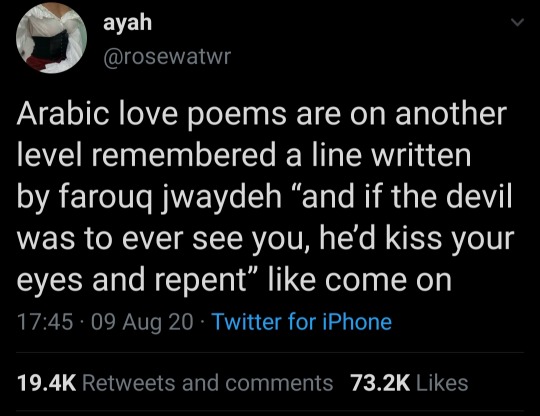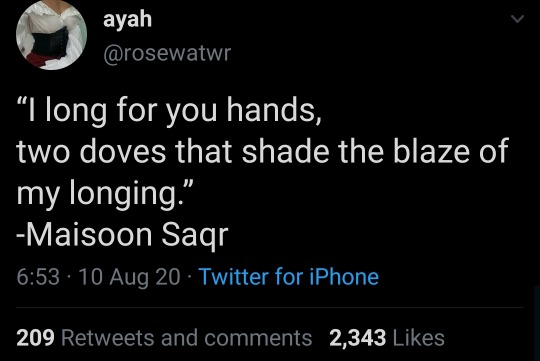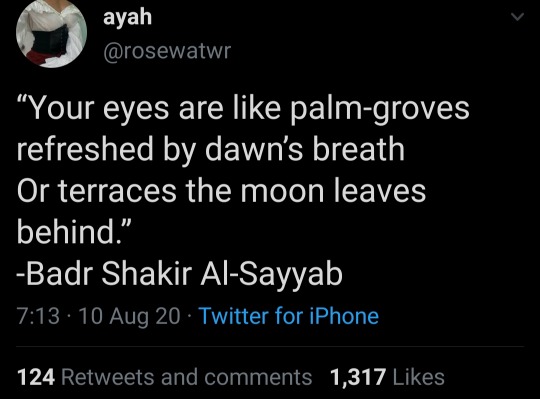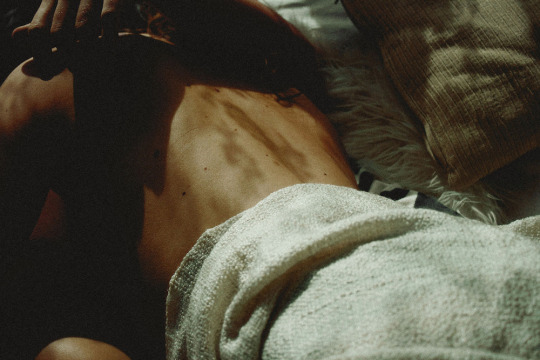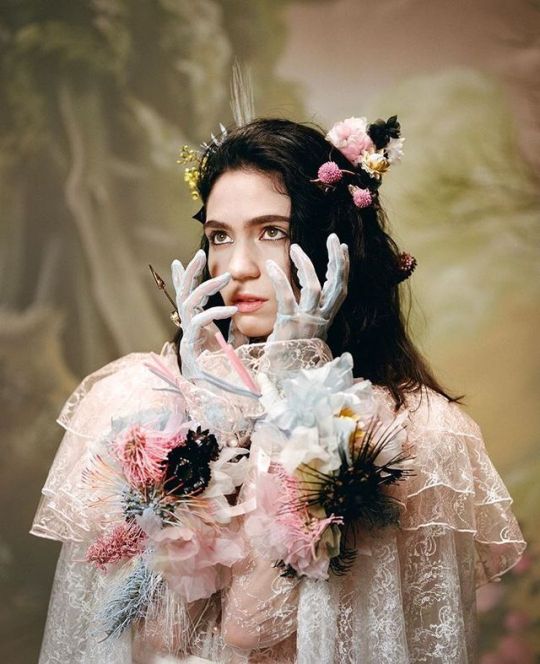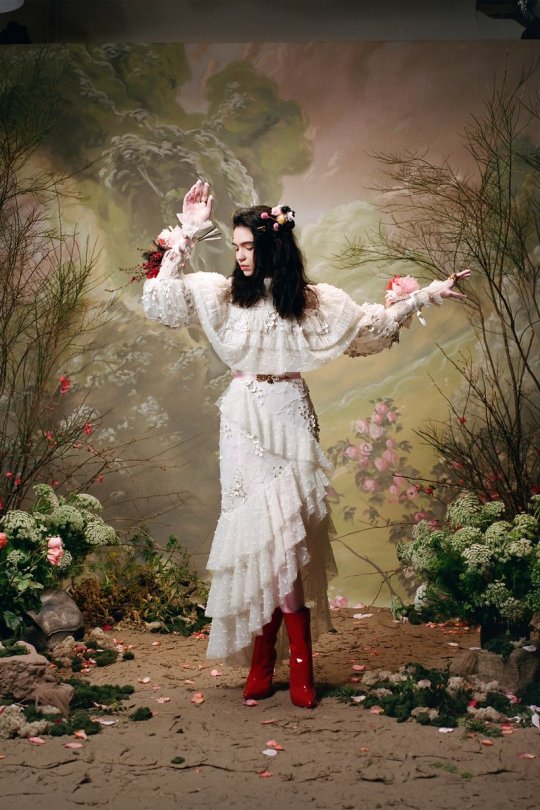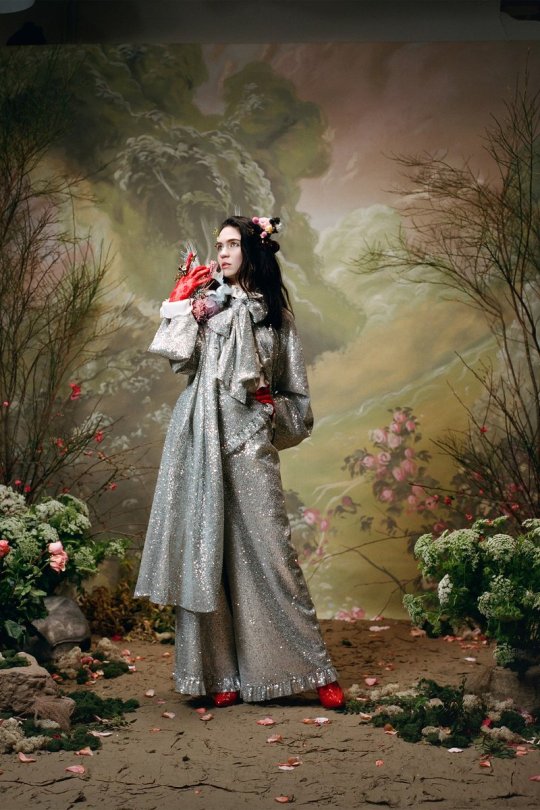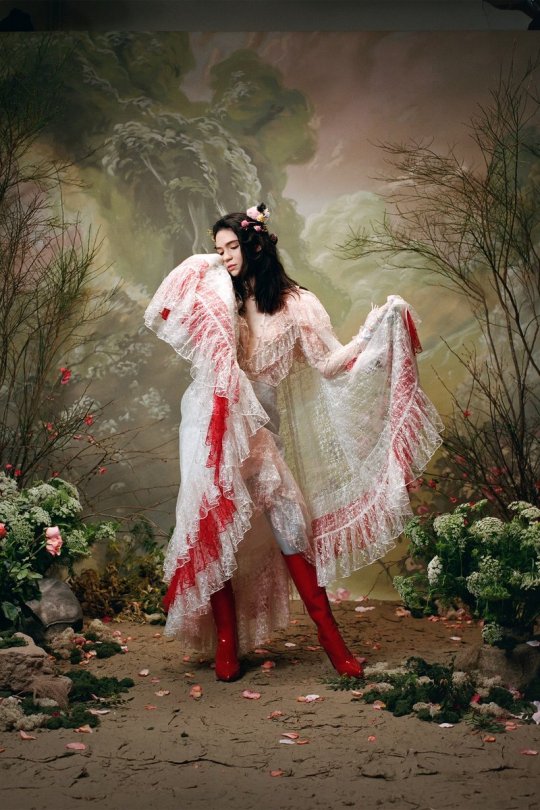Text





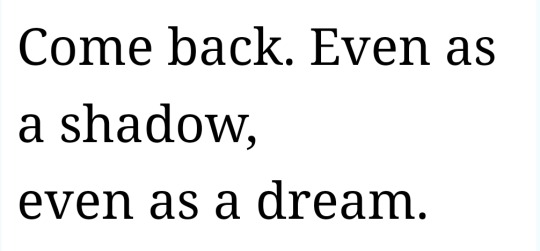
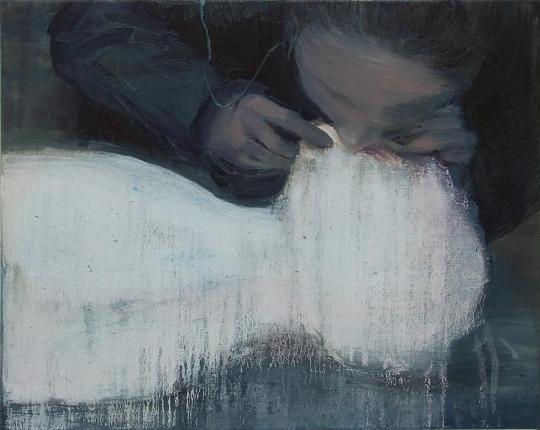
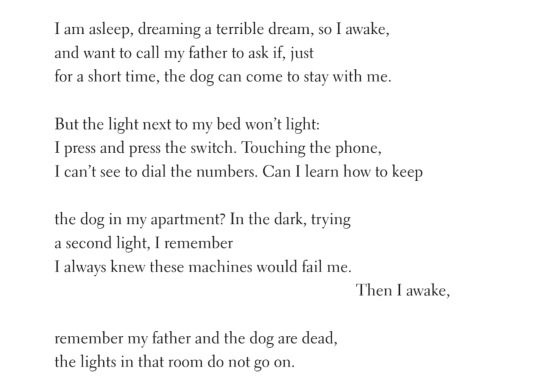




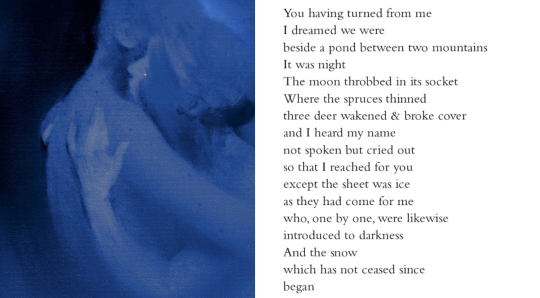
the way somebody comes back but only in a dream
1.)Hannah Lock, Not Quite Here / 2.)Wendell Berry, “A Meeting” / 3.)Euripides, Grief Lessons: Four Plays by Euripides, tr. Anne Carson / 4.)Leila Chatti, “I Dreamed I Forgot” / 5.)Anna Akhmatova, Poem Without A Hero and Selected Poems, tr. Lenore Mayhew & William Mcnaughton / 6.)John Berger, A Seventh Man / 7.)Euripides, Grief Lessons: Four Plays by Euripides, tr. Anne Carson / 8.)Xie Lei, Blow / 9.)Frank Bidart, “Light” / 10.)Li Qingzhao, “Tune: Pertridge Sky,” tr. Jiaosheng Wang / 11.)The Dog Island. Ubisoft, 2007 / 12.)Elisa Gonzalez, “After My Brother’s Death, I Reflect on the Iliad” / 13.)Ōtomo No Yakamochi, Written on the Sky; Poems from the Japanese, tr. Kenneth Rexroth / 14.)@/solavey, indigo / 15.)Louise Glück, 12.6.71
19K notes
·
View notes
Text
rebloging on a sunday

Alex Dimitrov, from “Living in Time” [ID in ALT]
36K notes
·
View notes
Text
at least once a day you should read a poem that slices you clean in half. and then you go to the post office or something
54K notes
·
View notes
Text


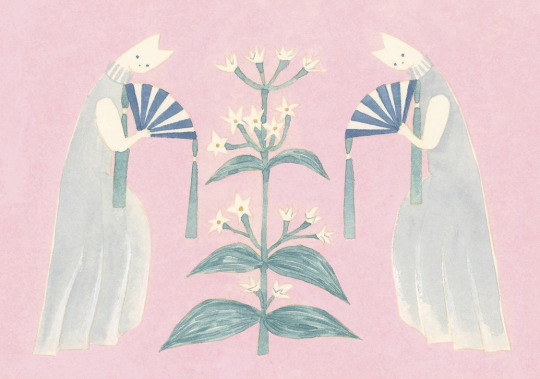





Paintings by Yuka Hiiragi for the cozyca products 2023 ‘day and night’ calendar
16K notes
·
View notes
Text
Sokay is a headdress worn by married women, typical for Turnovo, Tryavna, Gabrovo, Sevlievo and Lovech regions. It has been restored from preserved original components at the end of the XIX century. It has openwork embroidery, with geometric or plant motifs and family - tribal signs in the compositions; a closed hoop with coloured enamel spots or coloured glass large grains; an elliptical board with a hole and many ornaments of small silver coins, beads and others hanging over the ears. The sokays are separated into three styles - Gabrovo (Gabrovo, Tryavna and Sevlievo), Turnovo(sometimes called "Kilifarevski") and Lovech. The Lovech version is more modest, but it too was universally banned by the church and Turkish authorities, as the women resemble the once noblewomen from Tarnovo.


(Top image - sokay from Gabrovo, bottom image - sokay from Turnovo)
One legend tells how the sokay appeared in the Tryavna region: “… with the fall of the Second Bulgarian Empire, noble families from Turnovo fled and settled in the remote and inaccessible for the Turks areas, where they remained as settlers to save their lives. These nobles brought here this royal jewellery, which was borrowed by the population, who put it to use in their everyday life." This legend, linking the origin of the sokay with the royal tiaras, according to local historians, explains the desire of the Turkish authorities to put them out of use in the early XIX century. Another legend tells us how this happened: “The governor of Tarnovo decided to erect a clock with a tower in Tryavna, as a gift, but with a condition: that the women of Tryavna and the surrounding area stop wearing the sokay. The sokays were collected and given to him when the clocktower was finished." This legend connects their removal in 1814 with the permission of Feizi Aga to build a clock tower in Tryavna. But a suspicion exists that in that collecting the sokays, the governor of Tarnovo passed not only a political measure -with its rich metal decoration the sokay forced the woman to walk with her head held high, which was not liked by the Ottoman rule, but also "satisfied his numismatic tendency, by taking away all sorts of ancient money that adorned the sokays.”. These were hardly the only reasons for the ban on wearing sokay, given that at the same time sokay was banned in Gabrovo as well. According to Evgenia Lepavtsova, the reasons for the removal are both religious and socio-economic.

(Sokay from Tryavna)
A copy of a psalter from 14.02.1814 from Gabrovo shows that the ban is an expression of the public mood and attitude of the church to the luxurious clothing as a sinful manifestation. In the preserved and unpublished archive of the Ethnographic Institute with a museum at the Bulgarian Academy of Sciences, elderly people from the Tryavna huts said that after the Liberation the priests in Tryavna forbade the women from the huts to worship with sokays because the long piece of fabric at the back of the sokay would put out the lit candles. Both the hostile attitude of the Ottoman authorities towards the lavish clothing of the Bulgarians and the "useless waste of money" in providing these ornaments, which caused "envy and bad imitation", are cited as reasons for the forcible removal of the sokays in the Gabrovo region. Copper circles in the 60s of the XIX century sold between 150-200 groš. The coins were sold for 3 groš. For one sokay 200-300 groš went only for the strings of coins. The price of the whole sokay was about 500-800 groš, those with silver or gilded circles were more expensive. In view of this financial burden, the tradition gave way and the young bride was allowed to take someone else's sokay after the wedding, but for Easter, she had to appear with her own. Socio-economic changes in the late XIX and early XX centuries, which necessitated cheaper and more comfortable clothing, led to the final demise of the sokay even in the remote huts.


(Back of a Tryavna sokay)
Since it went off mass use in the early XIX century, we rely mainly on descriptions preserved in the memories of the elderly. Hristo Daskalov and his son Bogomil Daskalov used such memoiries and descriptions to create the most complete description of the Tryavna sokay. Valuable documents for this jewelry are two paintings painted after the Liberation - "A woman from Tryavna" by Ivan Popdimitrov, of which only a photocopy is preserved (the painting burned in 1944 during the bombing of Sofia), and "A woman from Bozhentsi" by Ivan Mrkvička, painted probably in the year 1896. The sokay is associated with the "sukman" style dress and is widespread among the population on the northern slopes of the Central Balkan Mountains.

("A woman from Bozhentsi" by Ivan Mrkvička)
The sokay, which adorned the heads of married women, was placed on the bride's head on the Monday after the wedding. In the older days, this happened on Wednesdays, and sometimes on the first Saturday after the wedding, when she would come out for the first time from the groom's house and the ritual unveiling would happen. Early in the morning, after returning from fetching water, the veil was removed from the women in the boy's house and a sokay, given to her by her father-in-law, was placed on the bride's head. This change was accompanied by a special ritual, the memory of which is no longer preserved, but the expression "they are preparing the sokay for the bride" as a sign of something special remained. A woman whose parents had died could not take part in putting it on the bride's head. The bride decorated the white piece of fabric, by attaching sokay embroidery made by her while still unwed. The other parts were from the mother-in-law's sokay. If the family had more sons and had already given the sokay to their first daughter-in-law, the father-in-law and mother-in-law ordered the goldsmith to make new parts for a sokay, while relatives and close acquaintances also helped collect the coins. The sokay was worn by the married woman until the marriage of the first son, when it was given to the daughter-in-law. If the woman had only daughters or was childless, she could carry the sokay until old age. But according to P. Tsonchev, "older women, who gave birth to several children, stopped wearing sokay, as well as decorating themselves with flowers." They covered their heads with a kerchief, which they kept in place with a needle called a "stitch".




(Sokay embrodery)
The sokay had 5 parts: a metal circle consisting of three hinged parts, curved in an arc, decorated with coloured stones. It is 32 cm long, 4 cm wide, and about 1 mm thick. It was made by the Tryavna goldsmiths. In the rich houses of Tryavna merchants it was gilded or silvered, and in the poorer ones - it was made of copper. In mourning, the metal circle was covered with a black fabric, that had sokay embroidery with certain motifs. The "buka" is a wooden elliptical board with a hole made of beech, hence its name(Bulgarian - бук/buk). The peleshki are strings of thin silver coins - 5-6 go 30 cm long. In addition to them, pendants made by goldsmiths were also attached. They were attached to the sides of the cheekbones and were called "smocheta
It was customary that no one could see the maiden while working on the embroideries for her sokay. Therefore, regardless of the characteristic motifs and colours, there are differences in sokay embroidery. She made several pairs as to have for life as part of her dowry because the married women did not sew such. The kerchief covered the buka, wrapped around the neck and went down the shoulders. It was obligatory for the married woman's hair to be covered because according to folk beliefs, it is one's vulnerable place. Thus, sokay was not only a sign of a married woman but also an amulet. At the beginning of the 19th century, the sokay was replaced by a headscarf - cotton or silk with white, blue, green or brown, bordered with nalima. The headscarf covered a fez with a sewn-on metal plate, tepeluk, on top. The tepeluks were coins of gold, silver, copper or specially made by the goldsmiths for the purpose tiles with the image of St. George, Virgin Mary, double-headed eagle, etc. The fez, according to Hr. Daskalov, was worn until 1850. In the memoirs of Teodora Peteva at the end of the XIX century such fez, with a black headscarf on top, was still worn by grandmother Dimiytsa. They were also worn in the villages.
According to Hristo Daskalov, the sokay was removed between 1814 and 1820. The women of Tryavna did not obey the decision of the Tryavna chorbadji Hadji Hristo, Hadji Kancho and Genko to throw the sokaъs and put on fezzes, on Easter after the service Hadji Hristo stood at the door of the church and when a woman wearing a sokay passed, he would knock with his crutch on the sokay's hat. The sokay would tilt down and be messed up. Nevertheless, sokays were carried by some Tryavna women almost until the end of the XIX century. Bogomil Daskalov remembers that as a child in 1882-85 he saw sokay, such a rare thing impressed the children and they would crowd to watch the majestic figure of the bride with sokay, which would make the most pleasant sounds during horo dance. The sokays remained in the huts surrounding long after their removal in Tryavna. On Sundays and holidays, when people came down from the surrounding huts and joined the horo dances, "women were seen wearing the already forgotten head ornament - sokay" - writes Todor Dukhovnikov. Pencho Damyanov from the village of Stanchev Han says that the last time he saw a woman with a sokay was in 1943 (the wife of Angel Smilov from the village of Vlasatili) on the occasion of a celebration.
Today, memories of the sokay are preserved through archival documents and photographs, as well as museum exhibits.
49 notes
·
View notes
Text
Slavic offerings
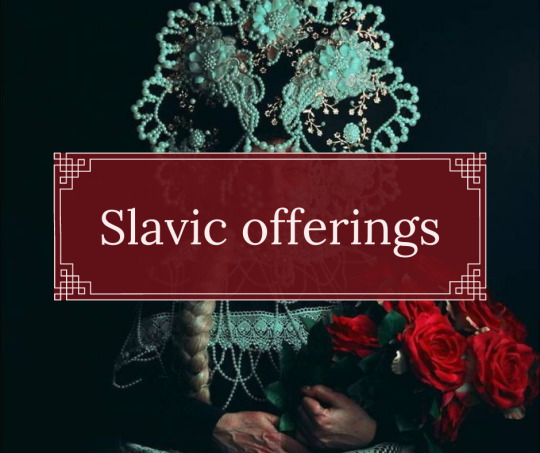
Table of contents:
I. Sources for Slavic offerings
II. The who
III. The where
IV. The when
V. The what
─────────────────
SOURCES FOR SLAVIC OFFERINGS
─────────────────
Slavic paganism is objectively a very hard (some would say impossible) religion to reconstruct or revive. There’s not much surviving data and contemporary sources mentioning practices of ancient Slavs are few (so few that they were fit into a single book „Sources of Slavic Pre-Christian Religion” by Juan Antonio Álvarez-Pedrosa), far between and typically heavily biased against them. We do possess significant amount of archeological data, which however proves itself notoriously hard to interpret. Luckily we also have access to centuries of records about Slavic folk customs. While chronological distance between ancient Slavic pagans and modern Slavs described in those ethnographic sources can be quite large the living traditions of Slavic culture prove very useful in completing fragmentary ancient data.
”Using folkloristic sources may be helpful in creating a possible context for archeological findings. If used critically, they can sophisticate and nuance our interpretations. In the context of Slavic culture, using east Slavic folklore sources seems to be exceptionally valuable, as they are still relatively undiscovered and understudied. Another argument is that the Eastern Slavs were under the influence of the Orthodox church, which had a different (more liberal) impact on their folk culture than Catholicism in the area of Poland.”
- Sacrifices among the Slavs: Between Archeological Evidence and 19th Century Folklore by Izabella Wenska
This is equally true for study of the specific aspect of Slavic paganism that are offerings. Information provided below comes from a mix of medieval sources contemporary to the last Slavic pagans, archeological discoveries and folk customs. I would like to disclaim that this blog post is by no means an exhaustive explanation of Slavic practices of offering and sacrifice. Nonetheless I do hope that it will provide the readers with some new knowledge and inspiration.
Keep reading
656 notes
·
View notes
Photo
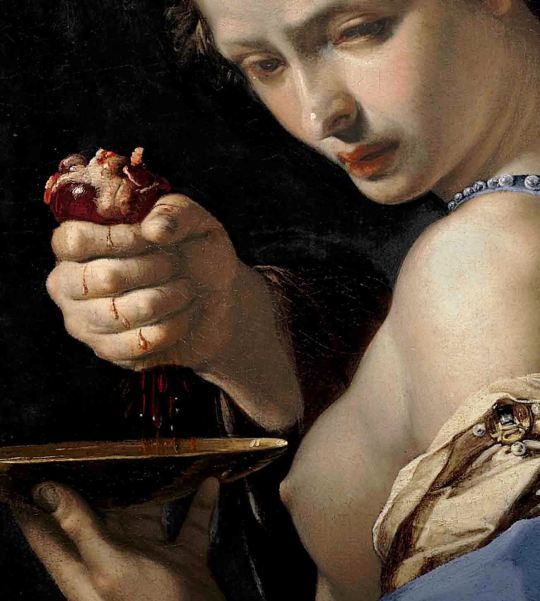
Ghismonda with the heart of Guiscardo (Detail), 1650.
By Bernardino Mei
39K notes
·
View notes
Photo

Dress from the Fra Angelico Collection, 2011
Rodarte
LACMA
2K notes
·
View notes
Photo
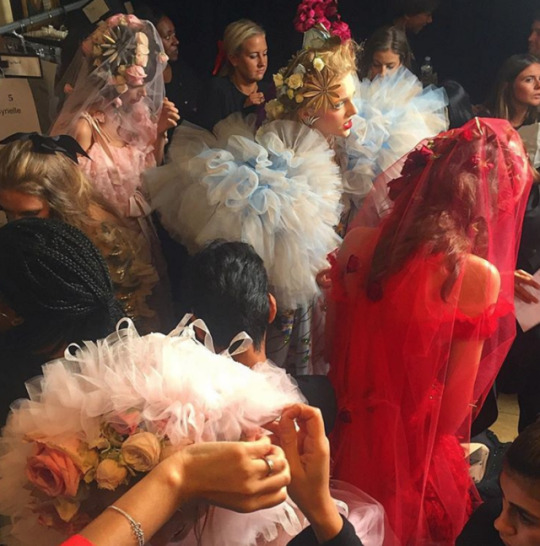



Rodarte S/S 2019
This looks like a Degas painting or something
44K notes
·
View notes
